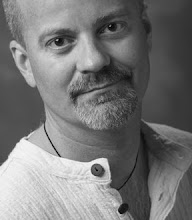One of the central principles underlying this entire endeavor is that each project will evolve organically based on the contributions of participants (company members, people from local communities, and others). So while this "model" is intended to help clarify the company mission and manifesto, it should be considered provisional.
The long-term concept is to form a permanent, core company of Pittsburgh-based theatre artists committed to the PACT mission and values. As a group, the core company members should represent a cross-section of the city's diversity. As individuals, they should possess skills and interests in multiple areas. There will be no strict compartmentalization: no one will be exclusively a performer ... or a writer ... or a designer ... or an administrator. The company will work together as a team of true collaborators to accomplish what needs to be done. That doesn't mean everyone will do everything; the particular talents and predilections of individual members will be taken into account in determining their specific responsibilities and activities on a given project. Each core company member may or may not be involved in every production, depending on the focus of the piece, scheduling, and other factors.
The core group will be supplemented by temporary members who participate on a fixed-term or by-project basis. One of the goals here is to provide opportunities for younger professionals (and perhaps even non-professionals) to gain experience and receive mentoring. But it's vital that there be no "status" gap between core and temporary members. All company members will have equal voice in administrative and artistic decision-making.
Projects will be initiated in response to local concerns and events that suggest potential for illuminating connections between issues and populations. Ideally, the subject matter also will lend itself to contextualization within national and global frameworks. For example, the recent shooting of three police officers in Stanton Heights might become the leaping off point for an exploration of intersections between gun violence and various other topics: constitutional rights, race and class conflict, drugs, the death penalty, etc. Questions about the local impact of these issues could be considered within the larger societal discourses around them.
Texts will be generated collaboratively by the entire company. The process will entail brainstorming and discussion, research into areas identified through those sessions, interviews conducted within target communities, improvisation and other exercises to develop performance material, and, ultimately, editing and arranging by a smaller team of writers.
Aesthetics and styles likewise will be determined through a collaborative process, in conjuction with the development of the text. Each production is likely to consist of a range of techniques and forms, which might include dramatic scenes, "in their own words" monologues, song and/or dance numbers, ritualized actions, puppetry, clowning/commedia dell'arte, visual and text projections, documentary video, filmed sequences, and computer-generated images or animation. In short, any strategy that seems effective for achieving a desired effect will be incorporated.
A few sources of inspiration for this model are the "Living Newspapers" of the Federal Theatre Project, Bertolt Brecht and the Berliner Ensemble, Peter Brook, Joan Littlewood and the Theatre Workshop, Bread and Puppet Theater, The Living Theatre, Augusto Boal and the Theatre of the Oppressed, Tectonic Theater Project, and Anna Deavere Smith.
Thursday, April 30, 2009
Subscribe to:
Post Comments (Atom)

No comments:
Post a Comment